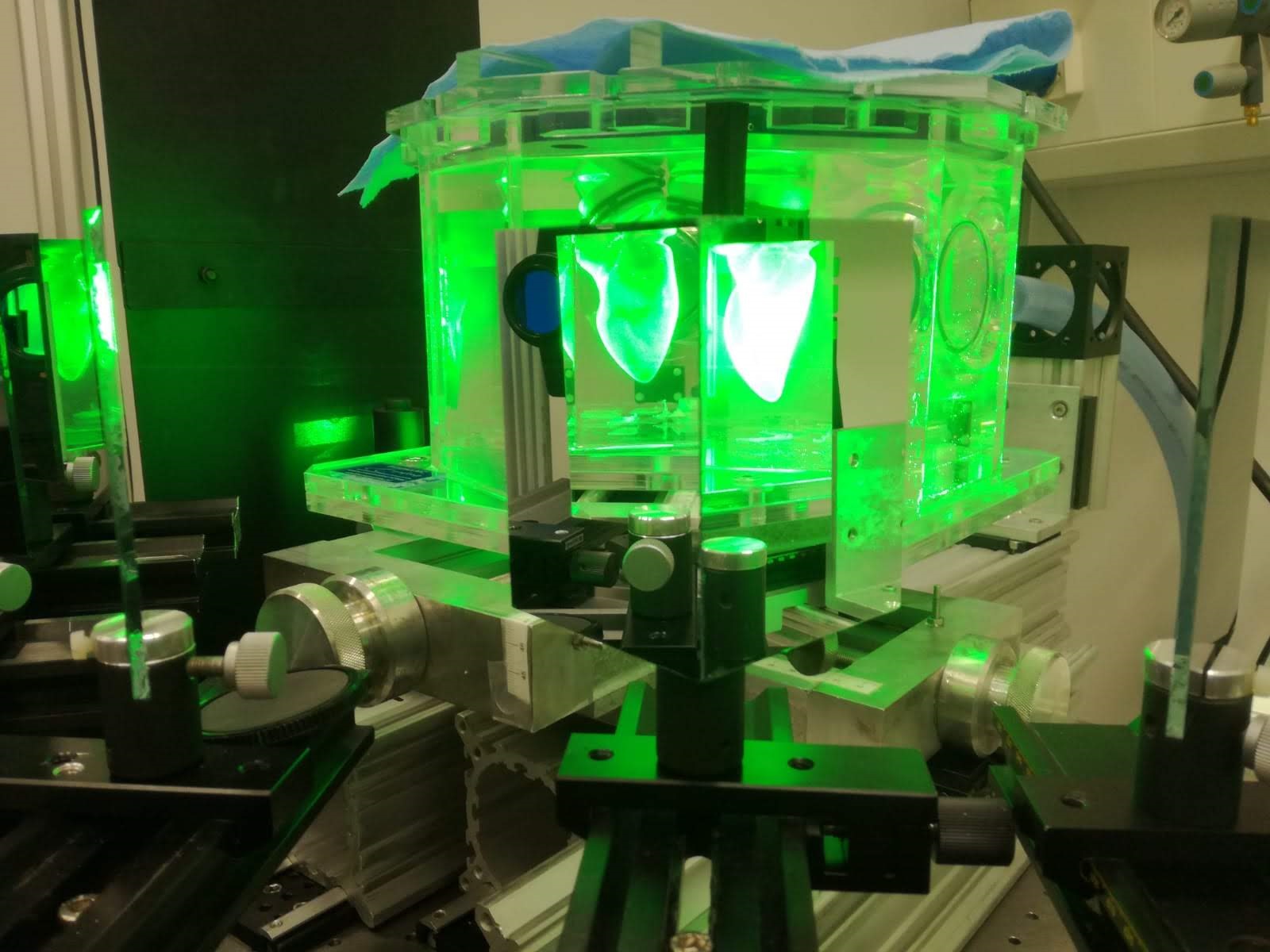Delft researchers and colleagues from Leiden University Medical Center, Erasmus MC and Ghent University made a 3D printed silicon heart to examine blood flow.
The three-dimensional flow structures within a heart chamber with biological valves are measured at various time instants. (Photo: Sasa Kenjeres)
Joint collaboration between the Dutch and Belgian scientists enabled the making of a full four-dimensional optical reconstruction of the flow patterns in a transparent model of part of a human heart that uses biological valves for the very first time. The researchers published their findings this week in the Journal of Biomechanics.
The setup is based on a transparent, 3D printed left ventricle, the arithmetic average of the hearts of 150 patients at Erasmus MC. The heart is made of silicon and beats like a real heart.
The researchers use a pump to force a transparent liquid, a mixture of glycerol and water with the similar viscosity as blood, through it. They added reflective particles to the liquid which are lit up by a laser. This reveals their movements to the cameras that the researchers pointed at the artificial heart, allowing them to map the fluid dynamics in the ventricle. The imaging technique used by the researchers is called ’tomographic particle imaging velocimetry’.
‘The technique could help predict heart conditions and heart failure’
The data that will be generated by this set-up will initially be used to improve imaging techniques such as MRI and ultrasound. The data will be used for validation and calibration. But the technique promises much more, according to dr. Sasa Kenjeres of the Faculty of Applied Sciences and one of the authors. “Knowing how blood flows through the heart – not only through a healthy heart but also through a heart with an abnormality – can help doctors determine when something is wrong, and could even help predict heart conditions and heart failure,” says Kenjeres.
Using this knowledge about the flow patterns, Kenjeres is working on a mathematical model that one day should allow doctors to tailor their advice to heart patients about their treatment. “Give us MRI and ultrasound data of a patient’s heart, his or her blood pressure and blood viscosity, and, in combination with this mathematical model we should be able to identify potential problems before they actually appear.”
In addition, the setup can be used to test new generations of mechanical valves to see how they function. Currently, biological valves are still many times better than artificial valves, so there is much to be gained in this area.



Comments are closed.